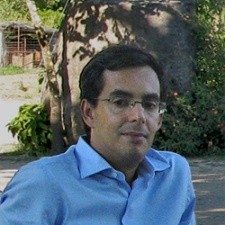Grilo, F., Pinho, P., Aleixo, C., Catita, C., Silva, P., Lopes, N., Freitas, C., Santos-Reis, M. & Branquinho, C. (2020) Using green to cool the grey: modelling the cooling effect of green spaces with a high spatial resolution.
Science of the Total Environment,
724, 138182. DOI:10.1016/j.scitotenv.2020.138182 (IF2020 7,963; Q1 Environmental Sciences)
The urban heat island effect creates warmer and drier conditions in urban areas than in their surrounding rural areas. This effect is predicted to be exacerbated in the future, under a climate change scenario. One way to mitigate this effect is to use the urban green infrastructure as a way to promote the cooling island effect. In this study we aimed to model, with a high spatial resolution, how Mediterranean urban parks can be maximized to be used as cooling islands, by answering the following questions: i) which factors influence the cooling effect and when?; ii) what type of green spaces contributes the most to the cooling effect?; iii) what is the cooling distance of influence? To answer these questions we established a sampling design where temperature and relative humidity were measured in different seasons, in locations with contrasting characteristics of green and grey cover. We were able to model the effect of green and grey spaces in the cooling island effect and build high spatial resolution predicting maps for temperature and relative humidity. Our study showed that even green spaces with reduced areas can regulate microclimate, alleviating temperature by 1–3 °C and increasing moisture by 2–8%, on average. Green spaces with a higher density of trees were more efficient in delivering the cooling effect. The morphology, aspect and level of exposure of grey surfaces to the solar radiation were also important features included in the models. Green spaces influenced temperature and relative humidity up to 60 m away from the parks' limits, whereas grey areas influenced in a much lesser range, from 5 m up to 10 m. These models can now be used by citizens and stakeholders for green spaces management and human well-being impact assessment.





